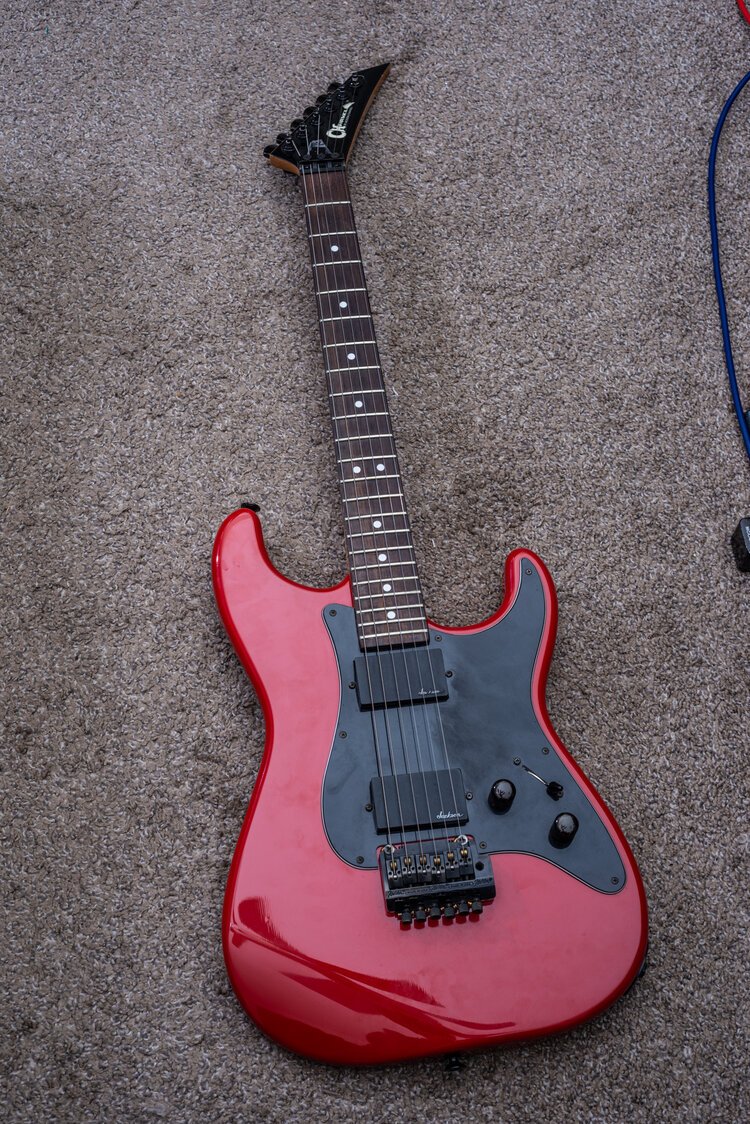This will surprise a lot of people, but growing up I was a really big Bangles fan - even before I played guitar. I enjoyed their musical style, and I appreciated the melodies and guitar riffs, largely played by Vicki Peterson. She was a Carvin endorser during this time and could be seen playing DC125’s and similar models all the time - usually with the “V” headstock but occasionally with the pointy shape too. This band is the same reason I ended up with the Jetglo Rickenbacker 360 too, especially early on in my guitar learning experience.
So I’ve finally gotten a proper, 80s Carvin DC! These are tough to find, and in hindsight looking at the catalogs and pricing I can’t believe these weren’t selling like crazy, especially now that I have one to play. The quality, fit, finish, and hardware is impeccable. Mine is equipped with gold hardware, including an gold original floyd rose (not so common back then!) and Carvin brand tuners which feel very high quality. The pickup is an M22SD, which is a high output mid-heavy pickup perfect for rock and metal, plus a coil tap. Even the mounting screws of the pickup are gold - a nice touch - along with the input jack plate too.
You can also differentiate this 1989 model from 1988 models by looking at the strap buttons, mounted at the tip of the upper horn. 1988 models have the upper horn strap button is mounted on the underside, towards the neck instead of on the tip. It’s also noteworthy that during this time, these could be ordered with flat mount Kahler 2300 tremolos (as used on ‘86 Charvels and plenty of others), tune-o-matic bridges, or Original Floyd Rose bridges.
This one has the “Jackson” style pointy headstock, although this is not exactly a Jackson shape - it has a much thinner profile especially evident on the bottom edge nearer to the nut. This shape was only available for 1988 and 1989, prior to that the either had a more traditional 3x3 headstock, or the “V” headstock I mentioned earlier (check out the Hazy Shade of Winter video for a clear view of that shape, on Vicki’s DC200). From 1990 onwards, Carvin reworked their shape, likely to avoid any copyright conflicts, to a new shape which I also really like. Here is my ‘89 headstock shape below so you can see just how long and thin it is, and held side by side with a Jackson they are actually quite different.
Another interesting thing is the rear of the headstock which has a very large volute, and no screws through the neck for the locking nut. This is also really unique for the time, manufacturers like Hamer and others continued mounting the locking nut screws through the headstock well into the 90s.
Considering the price - this guitar would’ve been under $700 back in 1989 - this is a heck of a guitar and I’m glad to have one in such great shape. Other than the gold hardware, mine looks nearly identical to this one in the 1989 catalog ad - very cool. I’d love to get my hands on another one, especially with some slightly different options (block inlays maybe?).











